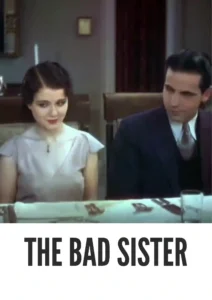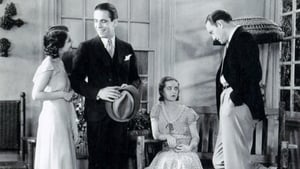Contact: [email protected]
Video Sources 0 Views
- Watch trailer
- The Bad Sister


The Bad Sister 1931 First Early Colored Films Version
Synopsis
Table of Contents
ToggleReview: The Bad Sister (1931) – A Compelling Portrait of Love and Deception

Introduction
“The Bad Sister” (1931) presents a gripping narrative that delves into the complexities of love, ambition, and betrayal. In this article, we’ll explore the significance of this classic film, its impact on audiences, and its enduring legacy in the realm of romantic drama.
Check The Full Colorized Movies List
Check Our Colorized Movies Trailer Channel
Understanding The Bad Sister (1931): Director, Cast, and Genre
Directed by the talented Hobart Henley, “The Bad Sister” (1931) showcases his skillful storytelling and ability to evoke genuine emotion from his audience. The film features a stellar cast, including Bette Davis and Conrad Nagel, whose performances elevate the story to new heights. Blending elements of romance, drama, and suspense, “The Bad Sister” (1931) transports viewers to a world where love and deception collide with devastating consequences.
Exploring the World of The Bad Sister (1931): Plot and Characters
At its core, “The Bad Sister” (1931) follows the tumultuous relationship between two sisters, played by Bette Davis and Sidney Fox, whose lives are forever changed by love and ambition. As they navigate the complexities of family, romance, and society’s expectations, they find themselves drawn into a web of deceit and betrayal that threatens to tear them apart. Along the way, they encounter a cast of compelling characters whose fates become intertwined with their own, leading to a dramatic climax that will leave audiences on the edge of their seats.
The Art of Film Colorization
Film colorization serves as a powerful tool that enhances the visual experience of classic movies, breathing new life into timeless stories and captivating audiences with vibrant hues. By digitally adding color to black and white films, colorization allows viewers to immerse themselves in the rich tapestry of cinematic worlds, exploring every nuance and detail with fresh eyes and renewed appreciation.
Early Colored Films: A Brief History
The history of colored films dates back to the early days of cinema, with filmmakers experimenting with various techniques to add color to their creations. From hand-tinted frames to early Technicolor processes, the evolution of colored film has been marked by innovation and ingenuity, paving the way for the development of modern colorization techniques that continue to captivate audiences to this day.
The Bad Sister (1931) and Its Early Colored Version
The decision to release “The Bad Sister” (1931) in a colorized format was met with both excitement and trepidation. While some welcomed the opportunity to experience the film in vibrant color, others expressed concerns about the potential impact on its visual aesthetic. Nevertheless, the early colored version of “The Bad Sister” (1931) offers viewers a fresh perspective on the timeless tale of love and deception, enhancing its emotional resonance and captivating audiences with its luminous beauty.
The Debate Over Film Colorization
The debate over film colorization continues to divide audiences and critics alike, with proponents praising its ability to breathe new life into classic movies and introduce them to a new generation of viewers, while detractors argue that it compromises the artistic integrity of the original work and diminishes its historical significance. As the debate rages on, filmmakers and audiences alike are left to ponder the merits and drawbacks of colorization in the ever-evolving landscape of cinema.
Examining The Bad Sister (1931) as an Early Colored Film
As with any colorized classic, the impact of colorization on “The Bad Sister” (1931) is a matter of personal interpretation. Some may argue that it enhances the film’s visual appeal and immerses viewers in its world, while others may feel that it detracts from the stark beauty of the original black and white version. Regardless of one’s stance on the issue, there’s no denying the enduring power of “The Bad Sister” (1931) as a timeless romantic drama that continues to captivate audiences with its compelling narrative and unforgettable performances.
Influence and Legacy: The Bad Sister (1931)’s Impact on Cinema
“The Bad Sister” (1931) has left an indelible mark on the world of cinema, inspiring countless filmmakers and captivating audiences with its timeless tale of love and deception. From its unforgettable performances to its captivating cinematography, the film continues to resonate with viewers of all ages, reaffirming its status as a beloved classic of the romantic drama genre.
Director’s Cinematic Legacy: Beyond The Bad Sister (1931)
Hobart Henley’s influence extends far beyond “The Bad Sister” (1931), with a diverse body of work that continues to captivate audiences around the globe. From “The Thirteenth Chair” to “Madame X,” Henley’s films are celebrated for their compelling narratives and memorable characters, solidifying his legacy as one of the preeminent directors of Hollywood’s Golden Age. Through his groundbreaking work, Henley has left an indelible imprint on the world of cinema, inspiring generations of filmmakers to follow in his footsteps.
Themes Explored in The Bad Sister (1931)
“The Bad Sister” (1931) explores a myriad of themes, from the complexities of family and relationships to the consequences of ambition and deceit. Through its richly drawn characters and poignant storytelling, the film invites viewers to ponder the intricacies of human nature and the choices that define our lives. As audiences immerse themselves in the world of “The Bad Sister” (1931), they are reminded of the enduring truths that bind us together and the universal quest for love and redemption.
Reception and Controversy Surrounding The Bad Sister (1931)
Upon its release, “The Bad Sister” (1931) received widespread critical acclaim, with many praising its compelling narrative, standout performances, and evocative cinematography. However, the decision to release the film in a colorized format sparked debate among purists, reigniting the age-old discussion surrounding film preservation and artistic integrity. Despite the controversy, “The Bad Sister” (1931) remains a beloved classic that continues to resonate with audiences of all ages, reaffirming its status as a timeless masterpiece of the romantic drama genre.
Where to Watch The Bad Sister (1931) Online
For those eager to experience the timeless magic of “The Bad Sister” (1931), the film is readily available on popular streaming platforms such as Netflix, Amazon Prime, and Hulu. Whether you choose to watch it in its original black and white format or the early colored version, “The Bad Sister” (1931) promises to transport you to a world of romance and intrigue, where love and deception collide with devastating consequences.
FAQs About The Bad Sister (1931)
Q: Is “The Bad Sister” (1931) based on a true story? A: No, “The Bad Sister” (1931) is a fictional tale crafted by screenwriters Edwin Justus Mayer and Charles G. Norris.
Q: Who are the main actors in “The Bad Sister” (1931)? A: “The Bad Sister” (1931) features an ensemble cast led by the talented Bette Davis and Sidney Fox, whose performances elevate the film to new heights.
Q: What awards did “The Bad Sister” (1931) win? A: While “The Bad Sister” (1931) did not win any major awards, it received critical acclaim for its compelling narrative and standout performances.
Q: Why was “The Bad Sister” (1931) released in a colorized format? A: The decision to release “The Bad Sister” (1931) in color was made to introduce the film to a new generation of viewers and enhance its visual appeal for modern audiences. While the choice to colorize the film sparked debate among purists, it ultimately allowed “The Bad Sister” (1931) to reach a wider audience and ensure its continued relevance in the annals of cinematic history.
Conclusion
As we reflect on the enduring legacy of “The Bad Sister” (1931), let us celebrate its status as a timeless classic that continues to captivate audiences with its compelling narrative, unforgettable performances, and breathtaking cinematography. Whether viewed in its original black and white format or the early colored version, “The Bad Sister” (1931) remains a shining example of the power of cinema to inspire, entertain, and provoke thought. So, whether you’re a seasoned cinephile or a casual moviegoer, take a moment to revisit “The Bad Sister” (1931) and experience the magic of love and deception as never before.











